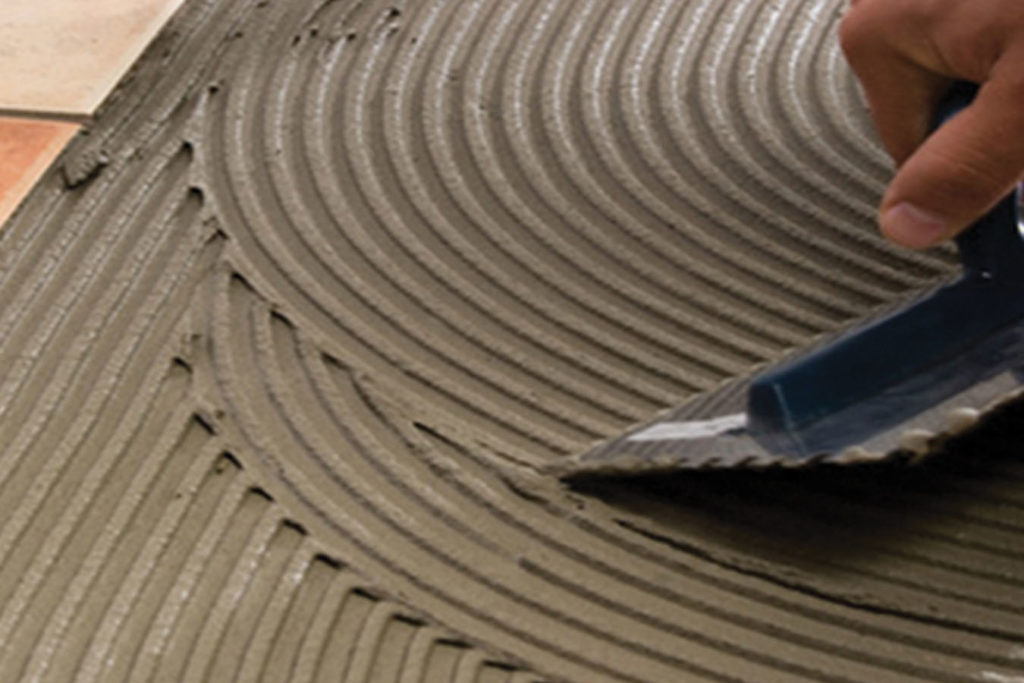
In the construction industry, the transformation of construction technology is based on the innovation of building materials. In recent years, polymer-modified dry mortar has shown a booming development in China. One of the outstanding examples is the emergence of polymer-modified dry powder tile adhesives, which is transforming the tile inlay process from the traditional thick layer method to the thin layer method, and has led to the revision and improvement of the ceramic tile adhesive industry. This thin layer of polymer modified tile adhesive dry powder has been popularized in Europe and America and accounts for more than 40% of dispersible polymer powder. It can meet the requirements of high quality ceramic tile and its adhesive performance for modern construction industry.
Traditional cement and mortar can only partially or totally not meet the requirements of many aspects of modern construction industry. A simple conventional cement mortar is attached to a porous substrate by physical and mechanical embedding. The traditional method of laying ceramic tile is to press a tile with enough cement mortar onto the substrate to fix it; the cement mortar fills the gap between the tile and the substrate, and then compacts. The fine cement particles penetrate into the porous substrate while penetrating the porous back surface of the tile. As the cement slurry hardens, the bonding of the tile to the substrate is complete.
Nowadays, with the expansion of ceramic tile applications and the development of ceramic tile manufacturing technology, the quality of ceramic tiles has been greatly improved. For example, in order to meet the requirements of tile resistance, frost resistance, etc, the amount of very dense ceramic tiles is increasing, and the porous substrate and ceramic tile are not common. Therefore, the technical process of the traditional cement mortar paste ceramic tile has been questioned.
In the 1950s, cement mortar was replaced by a ceramic polymer tile adhesive. This kind of polymer adhesive can have good adhesion to the substrate with less porosity and impart certain flexibility to the cement-based material, but there are still many problems in practical use, such as storage and transportation of materials, control of on-site mixing ratio, the disposal of the packaging barrel, etc. In 1953, when Wacker first developed the polymer adhesive in the form of VINNAPAS redispersible powder in the world, this situation finally changed radically. This powdered polymer adhesive is an ideal companion for inorganic adhesive such as cement. The combination of the two adhesives produces excellent synergistic properties that are not available with any single adhesive. The birth of VINNAPAS redispersible powders makes it possible to produce factory-produced polymer-modified mortars in dry powder form. This type of tile adhesive produced in the factory is very accurate in terms of composition ratio and production metering. On the construction site, the operator only needs to add a certain amount of water to the polymer modified dry mortar to mix and use. This so-called one-component pre-packaged dry powder mortar system greatly improves the storage and transportability of tile adhesive, quality controllability, bonding safety and economics of application.
Nowadays, the VINNAPAS brand is synonymous with disproportionate latex powders to end products. Its goal is to permanently improve the quality of tile adhesive and to meet specific requirements to the greatest extent possible. VINNAPAS redispersible powders give tile adhesive excellent adhesion, flexibility, workability, wettability, sag resisrance, and adequate open time and adjustable time. In practice, this adhesive has two significant advantages: first, the flexibility of the VINNAPAS dispersible polymer powder adhesive makes the tile adhesive technology more plausible, and secondly, it gives the ceramic tile finish a durable and pleasing effect.
